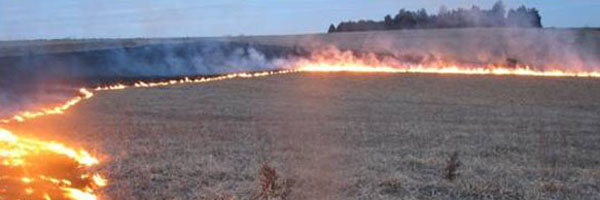
ECOLOGY & CONSERVATION BIOLOGY
IN THE MILLER LAB

ECOLOGY & CONSERVATION BIOLOGY
IN THE MILLER LAB
Environmental restoration has a long history. In comparison, ecological restoration and its research-based counterpart, restoration ecology, are relative newcomers, having been formalized around 1980. Although there are similarities with environmental restoration, ecological restoration is more narrowly defined. It is, in essence, a form of land management whose aim is to repair damage to ecosystems caused directly or indirectly by human activities. It has spawned several mainstream journals, dozens of books, and a professional organization, the Society for Ecological Restoration (SER), with members in over 70 countries. SER is characterized by its diversity, not only in terms of a membership that includes practitioners and scientists from a variety of disciplines, but also by a wide range of opinions on what ecological restoration is and where it should be heading. In this course, we will explore this dynamic field, beginning with an examination of its historical precedents and human dimensions. We will then review theories and concepts derived from the science of restoration ecology and discuss their relationship to restoration practice. In the final third of the course, we will examine the ways that restoration is currently being implemented. Field trips to various sites in Illinois will be a key component of this part of the course. We will study and evaluate the various strategies and tactics employed at these sites, and at a variety of other case studies presented throughout the semester.
- Recognize the role of ecological restoration relative to other forms of land management.
- Understand the foundational principles and ecological theories underlying restoration.
- Define key terms and core concepts in restoration and illustrate with examples.
- Appreciate the ways that various ecological and environmental factors affect ecosystem recovery.
- Recognize the importance of values and social processes in the development and implementation of restoration plans.
In the 1990s, natural resource management in the United States underwent a major paradigm shift. Rather than relying strictly on top-down expert-driven approaches, the new management framework emphasized collaborative, community-based decision making. Whereas traditional efforts focused on stand-alone protected areas, the new approach emphasized landscape mosaics comprising a variety of land uses. In this course, we will examine this alternative to traditional natural resource management, often referred to as ecosystem management. We will first discuss its origins and salient features. We will also review principles of conservation biology and landscape ecology that form the conceptual foundation of ecosystem management. Finally, we will explore the human dimensions of this paradigm. Throughout, we will explore case studies which illustrate ecosystem management in practice and evaluate the various strategies and tactics used in these examples.